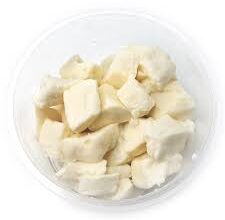What is Çebiti? A Popular Turkish Recipe

Çebiti is a simple yet delicious recipe that has been passed down through generations and is now enjoyed all over the world. Originating from the Ottoman cuisine, cebiti has been a staple breakfast option in Turkey for centuries. Its exact origins are not clear, but it is believed to have originated in Istanbul or Bursa during the reign of Sultan Mehmed II in the 15th century.
The word “Çebiti” means poached eggs in Turkish, which perfectly describes the main component of this dish – perfectly poached eggs served on top of a yogurt-based sauce. This unique combination of flavors and textures makes it stand out from other breakfast dishes.
Over time, Çebiti has evolved into different variations depending on regional and personal preferences. Some versions include herbs and spices such as dill or red pepper flakes, while others add meat such as pastrami or sucuk (Turkish sausage).
Although traditionally served for breakfast, cebiti can also be enjoyed as a light lunch or dinner option. Its versatility and simplicity make it a favorite among Turks who often enjoy it with friends and family gathered around the table.
In recent years, cebiti has gained popularity worldwide as Turkish cuisine becomes increasingly popular. It can now be found on menus in many restaurants outside of Turkey, making it more accessible to those who want to try
The origins of Çebiti: A brief history
The origins of cebiti can be traced back to the Ottoman Empire, which spanned from the 14th century to the early 20th century in what is now modern-day Turkey. At that time, it was a popular dish among the rich and powerful in Istanbul and other major cities.
Cebiti was originally created as a lavish meat dish, typically made with lamb or beef, along with an assortment of vegetables and herbs. It was often served at grand feasts hosted by rulers or wealthy families as a symbol of their wealth and power. In fact, it is said that it was one of the favorite dishes of Sultan Suleiman the Magnificent himself.
As time went on and more people began to enjoy this delicious meal, cebiti evolved into a more accessible dish for all social classes. The recipe changed slightly over time, incorporating new ingredients such as tomatoes and potatoes. However, the essence of cebiti remained intact – a hearty stew-like dish meant to be shared with family and friends.
The name “cebiti” itself has an interesting history. It is believed to have originated from an Arabic word meaning “togetherness” or “family”. This speaks to its traditional role as a communal meal where loved ones gather around a large pot filled with steaming hot cebiti.
In modern times, cebiti is considered one of the most popular Turkish recipes worldwide. Its reputation has been solidified through its inclusion in Turkish cuisine cook
Key ingredients used in making Çebiti
Cebiti is a famous Turkish dish known for its rich flavor and unique blend of spices. The key ingredients used in making this mouth-watering recipe play a crucial role in bringing out the authentic taste and texture of it.
Here are some of the essential components that make cebiti so delicious:
1. Lamb or Beef: The star ingredient of cebiti is undoubtedly the meat. Traditionally, lamb or beef is used for making this dish, but you can also use chicken if desired. The meat is cut into small pieces, usually around 1-inch cubes, which are then marinated and cooked to perfection.
2. Yogurt: Another important ingredient in cebiti is yogurt, which gives the dish a creamy and tangy taste. It also helps to tenderize the meat while keeping it moist during cooking.
3. Tomato Paste: Tomato paste adds a subtle sweetness and depth of flavor to cebiti. It also helps to thicken the sauce and gives it a beautiful red color.
4. Onions: Onions are used extensively in Turkish cuisine, including cebiti. They add a savory element to the dish and help to balance out the flavors.
5. Garlic: No Turkish recipe would be complete without garlic! It adds an earthy aroma and robust taste to it, enhancing its overall complexity.
Step-by-step instructions on how to make Çebiti
Cebiti, also known as “cebete” or “cebite,” is a traditional Turkish dish that has been passed down for generations. It is a hearty and flavorful stew made with lamb or beef and a variety of vegetables, herbs, and spices. If you’re looking to try something new in the kitchen or impress your friends and family with your cooking skills, follow these simple step-by-step instructions on how to make cebiti:
Step 1: Gather Your Ingredients
Before you start cooking, make sure you have all the necessary ingredients on hand. For this recipe, you will need:
– 1kg of diced lamb or beef (can also use chicken)
– 2 onions, diced
– 3 cloves of garlic, minced
– 3 medium-sized potatoes, peeled and diced
– 2 carrots, peeled and sliced
– 1 red bell pepper, chopped
– 1 green bell pepper, chopped
– 1 cup of chickpeas (optional)
– 4 tomatoes, chopped (or canned diced tomatoes)
– 2 tablespoons tomato paste
– Salt and pepper to taste
– Olive oil for cooking
For the spice mix:
– 2 teaspoons cumin powder
– 1 teaspoon paprika
– Pinch of red pepper flakes (optional)
Tips and tricks for achieving the perfect Çebiti
Cebiti, also known as cig köfte, is a popular Turkish dish that consists of bulgur wheat, minced meat, and various spices. This dish has gained popularity not only in Turkey but also in other parts of the world for its unique combination of flavors. If you are new to it or want to perfect your cooking skills, here are some tips and tricks to help you achieve the perfect cebiti.
Use high-quality ingredients: Cebiti is all about the combination of simple yet flavorful ingredients. To get the most out of this dish, it’s essential to use high-quality ingredients such as fresh and lean minced meat, preferably beef or lamb. The bulgur wheat used should be coarse-ground and have a good texture.
Soak bulgur wheat properly: Bulgur wheat must be soaked in hot water before using it in the cebiti mixture. This step softens the grains and allows them to absorb all the flavors from the spices and meat. It’s essential to soak bulgur for at least 30 minutes before adding it to your mixture.
Experiment with spices: Cebiti gets its signature taste from a blend of different spices such as red pepper flakes, garlic powder, paprika, cumin, oregano, parsley, etc. You can adjust the amount of each spice according to your taste preference or even add some new ones to experiment with different flavor profiles.
Variations and adaptations of Çebiti in different regions of Turkey
Cebiti is a beloved dish in Turkey that has been adapted and modified over time, resulting in several variations across different regions of the country. Although it is primarily served as a main course, the dish’s ingredients and cooking techniques may vary depending on where you are in Turkey.
One of the most common variations of cebiti can be found in Istanbul, where it is known as “Istanbul Cebitisi.” This version consists of thin slices of beef or lamb marinated in a mixture of olive oil, garlic, and various spices such as oregano and paprika. The meat is then cooked on skewers over an open flame until it reaches a perfect charred exterior while remaining tender on the inside. This version is often served with rice pilaf or bulgur wheat and topped with grilled vegetables like eggplant and peppers.
In Ankara, the capital city of Turkey, cebiti takes on a slightly different form. Here, instead of being grilled on skewers, the meat is pan-fried with tomatoes and peppers to create a rich sauce. Spices like cumin and sumac are also added to give this variation its unique flavor profile. It is typically served with flatbread or pita bread for dipping into the savory sauce.
Health benefits of incorporating cebiti into your diet
Çebiti, also known as çebi or şevketibostanı, is a popular Turkish recipe that has been gaining attention in the Western world due to its delicious taste and notable health benefits. This dish is typically made with lamb, rice, and various herbs and spices, creating a nutritious and flavorful meal.
Incorporating cebiti into your diet can provide numerous health benefits. Here are some of the reasons why you should consider adding this Turkish delicacy to your regular meal plans:
1. Rich in nutrients:
One of the main ingredients in cebiti is lamb, which is a great source of protein. Protein is essential for building and repairing tissues in our body, making it an important component for overall growth and development. Additionally, lamb contains vital minerals such as iron, zinc, selenium, and vitamin B12 which are all necessary for maintaining good health.
2. Promotes Digestive Health:
The combination of rice and herbs in cebiti makes it a fiber-rich dish. Fiber helps to regulate digestion by promoting regular bowel movements and preventing constipation. It also feeds the beneficial bacteria in our gut, thereby improving digestive health.
3. Supports Immune System:
The use of various herbs such as oregano, mint, parsley and dill in cebiti provides a boost to our immune system. These herbs contain antioxidants that help fight against free radicals that may cause cell damage leading to diseases like cancer and heart disease.
Adding a modern twist to the traditional
One of the most notable aspects of cebiti is its ability to blend traditional flavors and cooking methods with a modern twist. This ensures that while the dish remains true to its roots, it also offers a unique and exciting taste experience. In this section, we will delve into the ways in which it can be transformed with a contemporary touch.
Replacing traditional ingredients: A great way to add a modern spin to cebiti is by swapping out some of the traditional ingredients for more unconventional or international ones. For example, instead of using lamb as the main protein, you could opt for chicken or even tofu for a vegetarian version. Similarly, you can experiment with different types of grains like quinoa or couscous instead of bulgur wheat.
Incorporating new flavor profiles: Another way to give your cebiti recipe a modern edge is by introducing new flavor profiles that may not typically be used in traditional versions. Spices like smoked paprika, chili powder, and coriander can add an unexpected kick to the dish and make it stand out from other recipes.
Adding texture with toppings: Cebiti traditionally consists mainly of cooked meat and grains, making it quite soft in texture. To give it some added crunch and visual interest, try topping your cebiti with toasted nuts or seeds such as pine nuts or almonds, or crunchy vegetables like shredded carrots or sliced cucumber.
Pairing suggestions
Pairing suggestions for cebiti include a variety of traditional Turkish dishes that complement its rich flavors and textures. Whether you are planning a special dinner party or simply looking for ideas on what to serve with your cebiti, we have some delicious suggestions for you.
Grilled Vegetables: It is often made with lamb, which pairs perfectly with smoky, grilled vegetables like eggplant, zucchini, and bell peppers. The charred flavors of the veggies balance out the richness of the meat and add a refreshing element to the dish.
Pilaf: A classic accompaniment to many Turkish meals, pilaf is a simple yet delicious side dish that goes well with cebiti. The combination of fluffy rice and aromatic spices such as cinnamon and cumin adds depth to the meal.
Yogurt Sauce: Similar to tzatziki in Greek cuisine, Turkish yogurt sauce is a creamy addition that enhances the flavor profile of cebiti. Made with plain yogurt, garlic, dill, and lemon juice, this sauce provides a cool contrast to the warm and savory cebiti.
Shepherd’s Salad: This colorful salad is a staple in Turkish cuisine and makes for an excellent pairing with cebiti. Made with chopped tomatoes, cucumbers, onions, parsley, lemon juice, and olive oil – it adds freshness and crunch to each bite.




